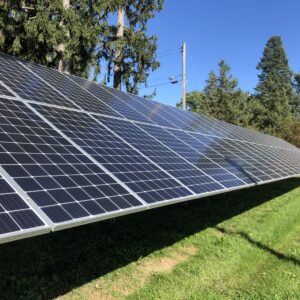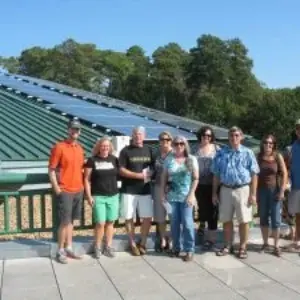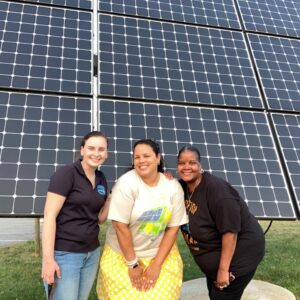Advocating for true community solar
- Factsheet
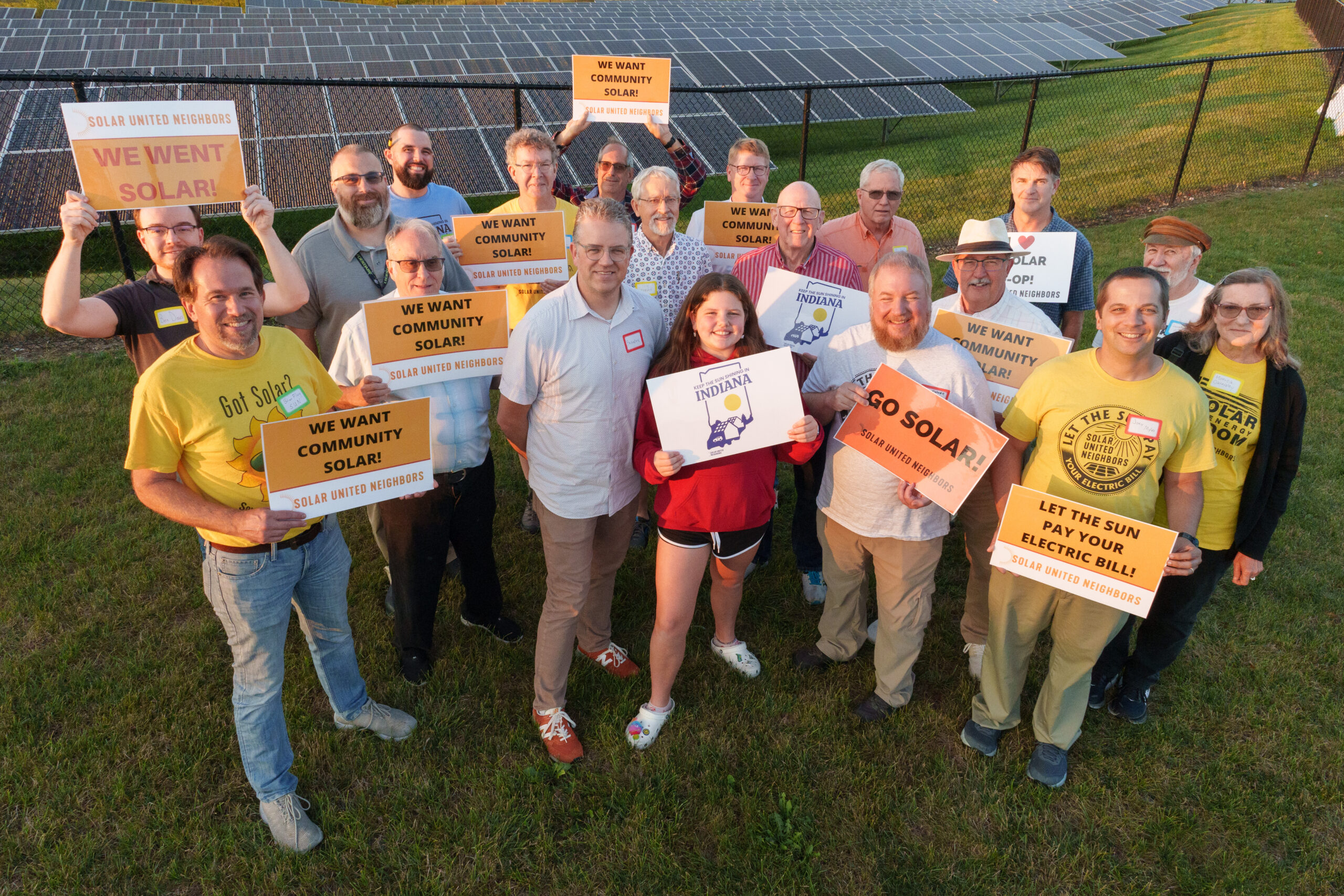
What is community solar?
Not everyone can go solar where they live. Maybe they rent or their roof isn’t a good fit for solar. Community solar offers the benefit of solar if you can’t, or prefer not to, install solar panels on your home.
Community solar lets individuals, businesses, or organizations buy or subscribe to a “share” in a community solar project. When you join a community solar project, you receive a credit on your electric bill each month. The size of your share determines how much credit you receive.
Watch our webinar series on community solar
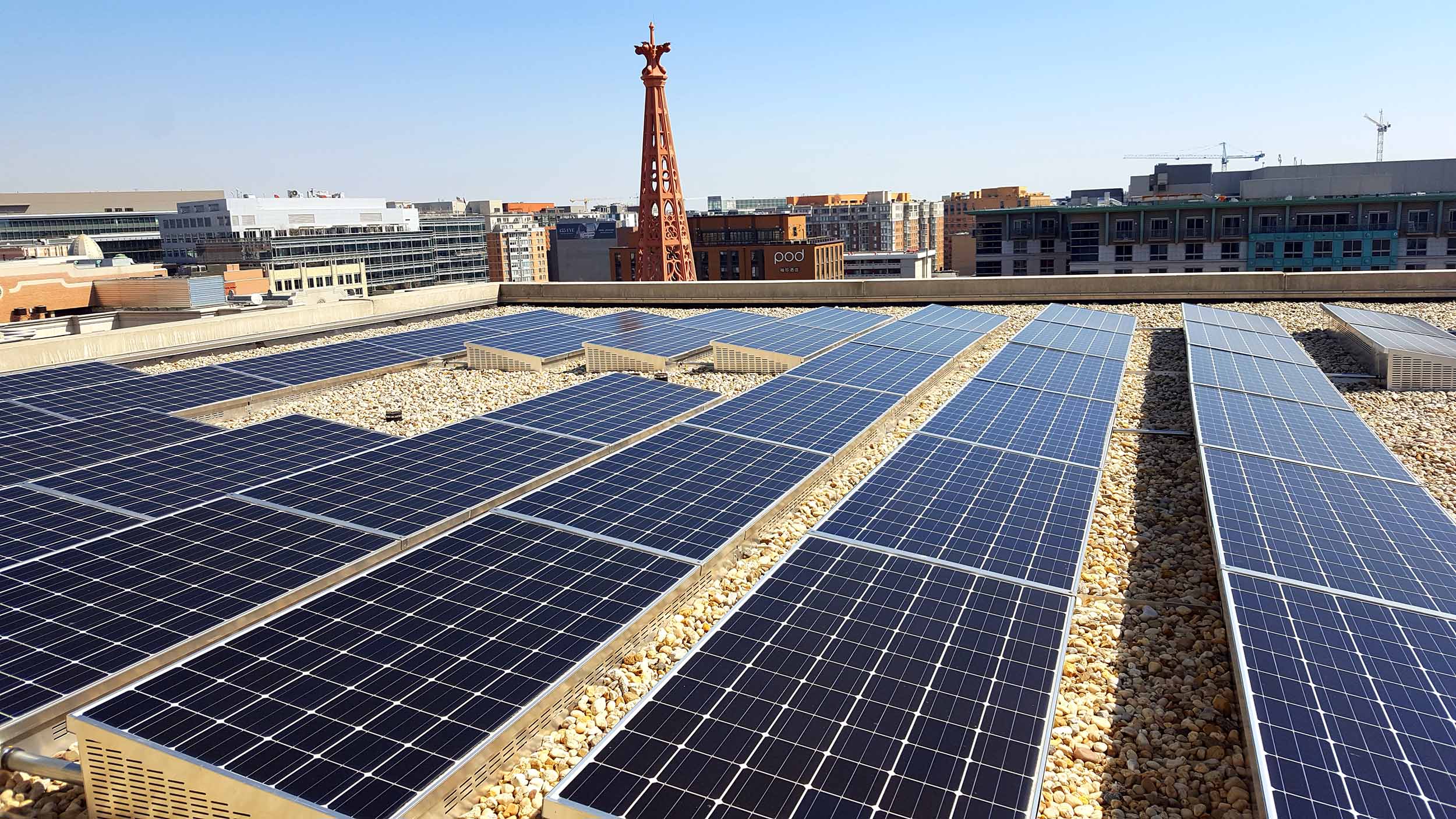
The growth of community solar
Currently, 24 states have community solar, plus Washington, D.C. and Puerto Rico. Additionally, a number of rural electric cooperatives and municipal utilities offer community solar as an option.
Community solar access largely depends on your location. Unfortunately, in many places, only utilities and large commercial developers are allowed to build community solar projects. In some places, the utility company can opt in to participating in community solar. In others, utilities are required to offer community solar.
We believe that communities — individuals, towns, churches, and neighbors — should have the right to develop their own community solar projects.
Thankfully, community solar is expanding.
The 2022 Inflation Reduction Act provides new incentives for community solar projects. Starting in 2023, small community solar projects (under 1 MW) qualify for a tax credit of 30%. This credit is available until 2033. These projects can earn additional credits for meeting specific requirements:
- + 10% for meeting domestic content specifications
- + 10% if at a brownfield site or in a community directly impacted by fossil fuels
- + 10% if in a low-income community or on tribal land (by application)
- + 20% if part of a Low-Income Residential Building Project or Qualified Low-Income Economic Benefit Project
Larger community solar projects can also qualify for the tax credit. But, these only apply at the same levels if they meet certain labor requirements.
Finding true community solar
Not all community solar projects are the same. Many utility-scale community solar projects lack the customer benefits of real community solar.
Many utilities are using community solar’s popularity to rebrand their own projects. Buyers should do their research before signing up, to ensure the community solar project truly benefits them.
True community solar meets these criteria
It’s a good economic deal for participants
Joining community solar should help participants lower their electric bills . Or, it should offer a good return on investment. If possible, customers should be able to invest in or own part of the system.
It is customer friendly
The community solar program should make it easy for participants to subscribe and unsubscribe. Participants should be able to transfer their share if they move within their utility’s service territory. It should also be easy for participants to understand what they are paying for. The program should inform subscribers of any on-going charges.
It clearly benefits the community
Real community solar provides benefits to the community beyond the electricity it generates. This is due to the shared-ownership nature of the project. These benefits include job creation, added grid resilience, and an opportunity for low-income families to benefit from solar energy.
Find a community solar project near you
Use this trusted guide to compare your options for community solar. Check back as the list continues to grow!
Putting more “community” into community solar
Solar United Neighbors fights to expand access to community solar. We also work to educate consumers and advocates.
We help solar owners and supporters to effectively advocate for community solar in their area. We led the charge to pass legislation in D.C. and Maryland that enabled community solar. We are advocating to enable community solar programs in Arizona, Indiana, Ohio, Pennsylvania, Virginia, and West Virginia.
We help to ensure equity is a cornerstone of community solar, so that everyone can benefit. We have worked to create rules that enabled low-income and local participation in the market. Limited programs or utility-run programs tend to leave regular people out of the market and out of opportunities to make money from the market. Our work has particularly impacted program design in D.C. and Maryland.
We create helpful resources for consumers interested in community solar. We also assist those seeking to develop their own community solar projects.
General resources
SUN’s Guide to Community Solar
Community solar siting policy
Community Solar Basics: Programs and Policy
Shared Renewables/Community Solar
Community Solar FAQs
National Community Solar Partnership
Resources for consumers
Community Solar Basics
Shopping for Community Solar
Residential Consumer Guide to Solar Power
Evaluating community solar projects
Resources for developers
Connecting Communities to Solar Developers and Investors
Resources for landowners
Guide to Land Leases for Solar
Get the latest on solar straight to your inbox.
Fight for your solar rights.
Everyone has the right to go solar. Spread the sunshine nationwide and in your local community by taking action, joining events, and more.
